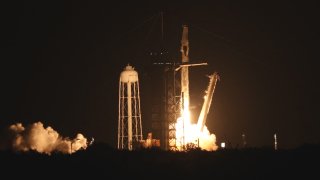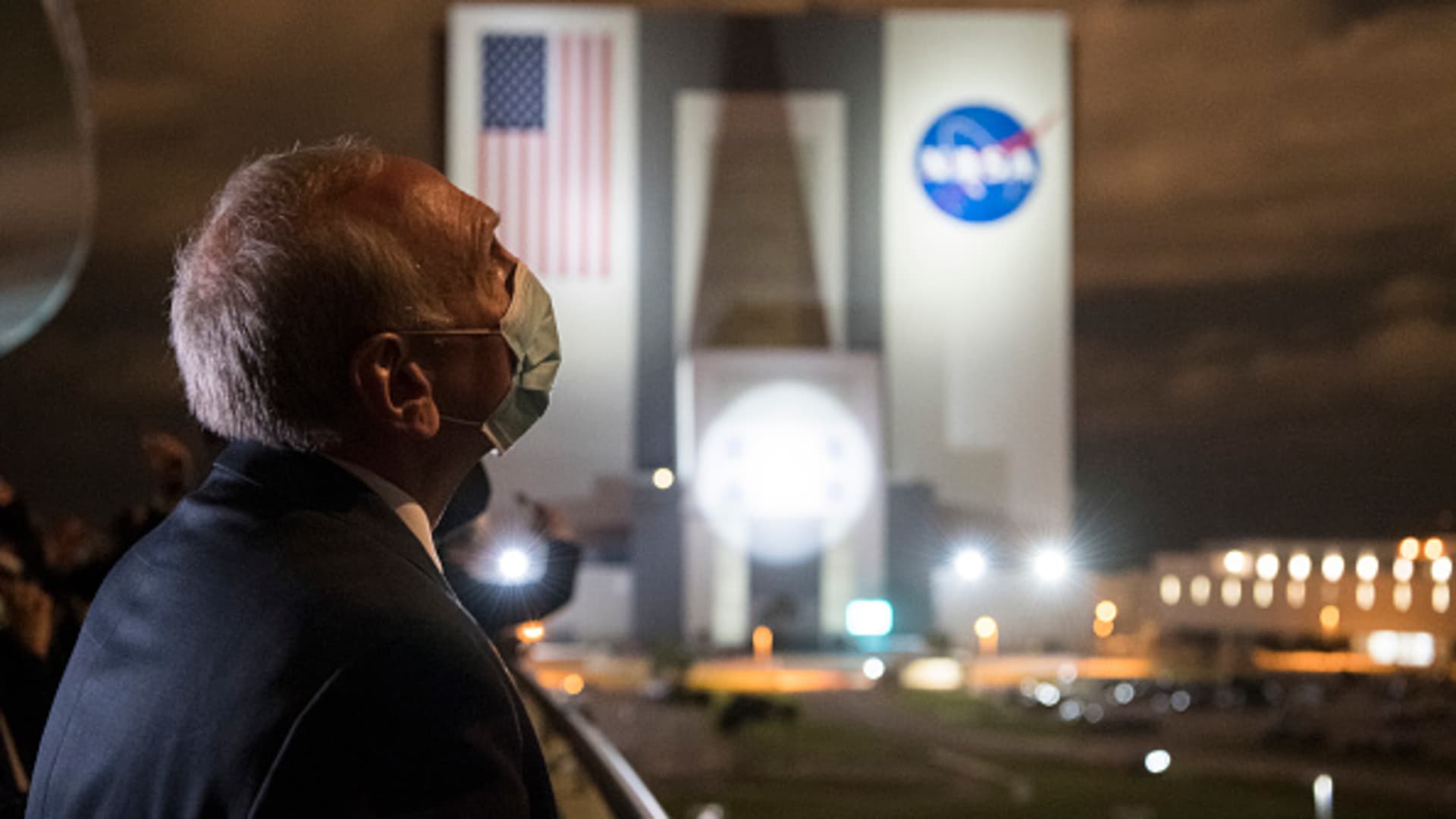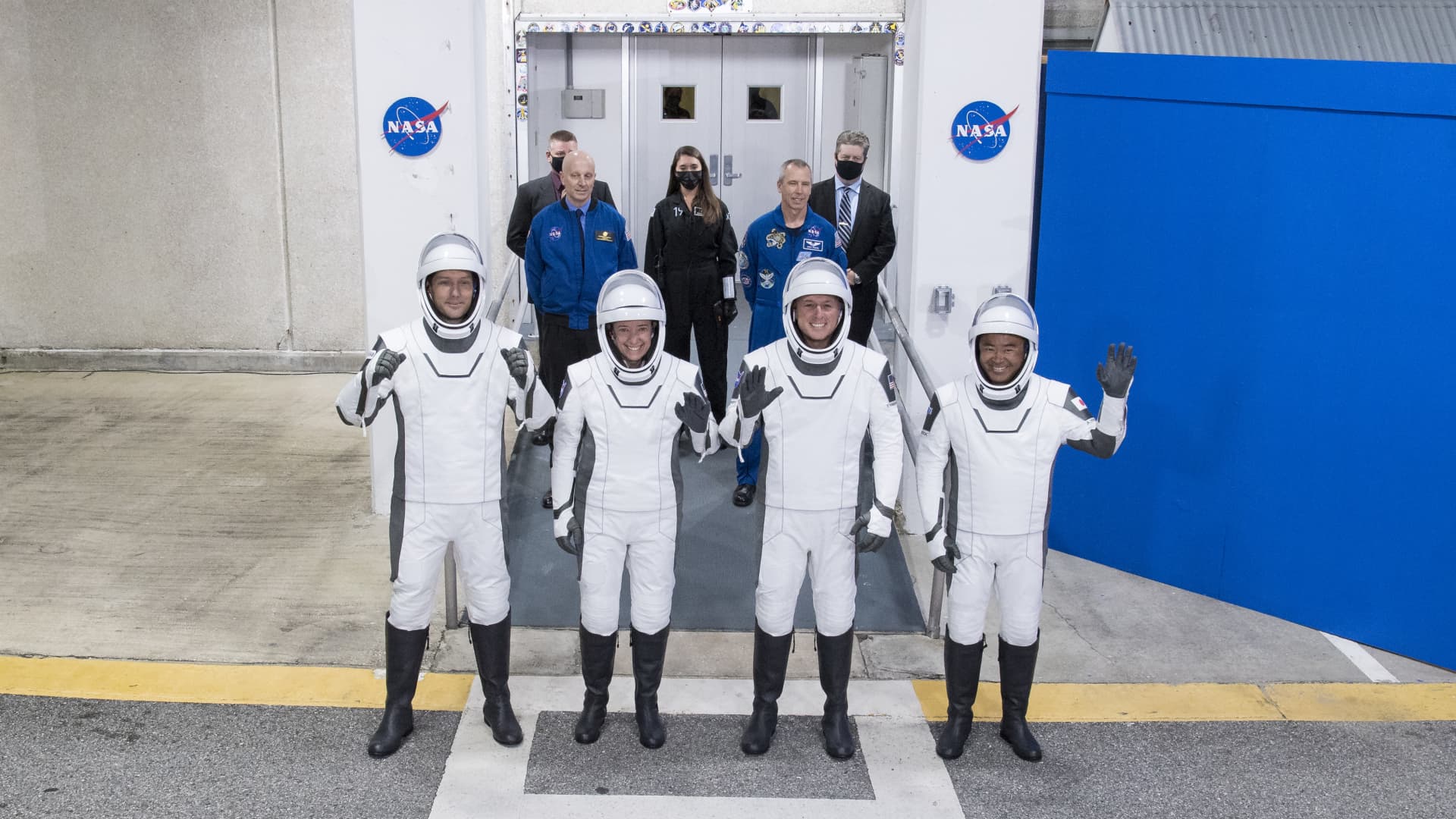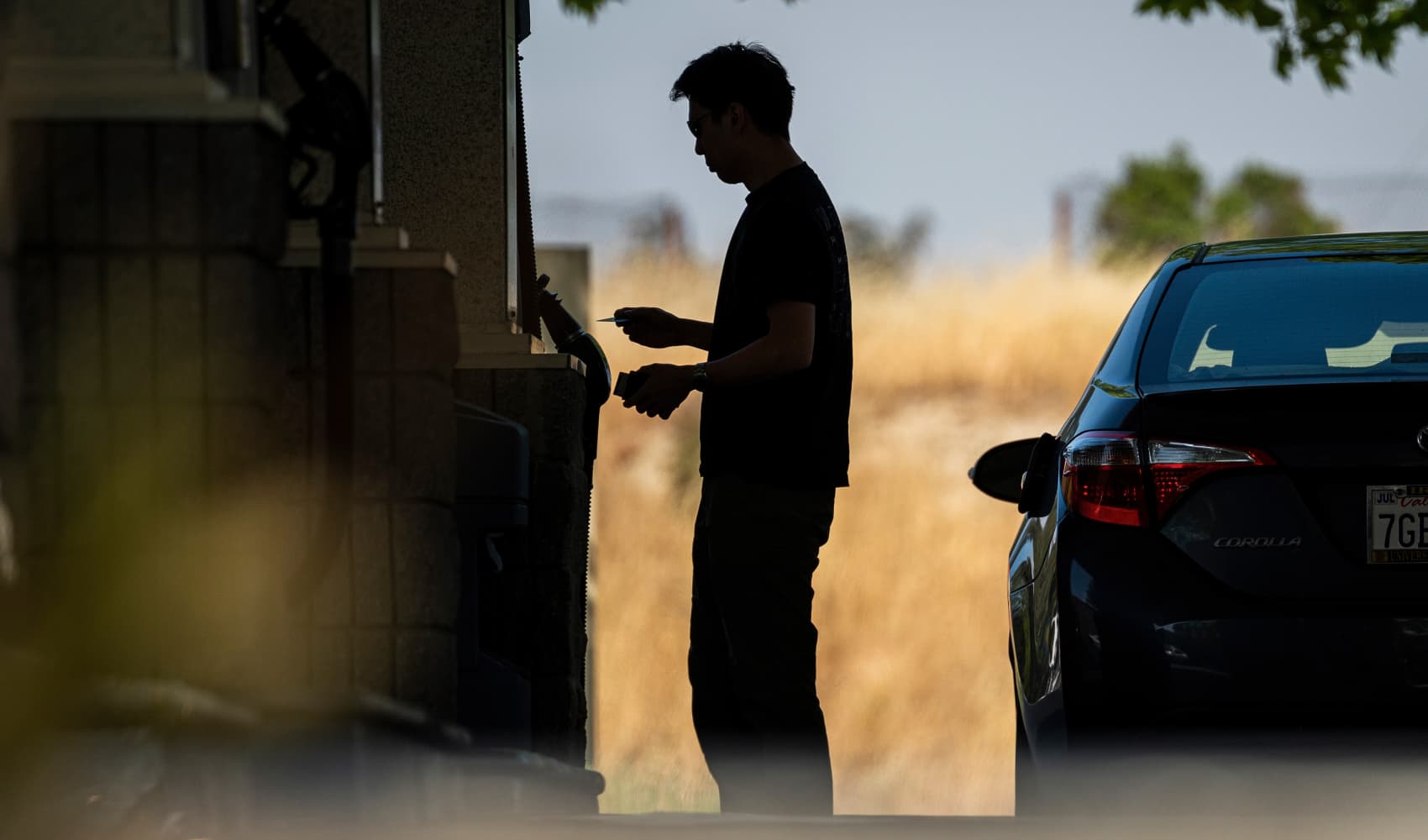
- SpaceX launched a group of astronauts for NASA early Friday, with Elon Musk's company now having sent 10 astronauts to space in under a year.
- A Falcon 9 rocket carried the four astronauts to space in the company's Crew Dragon spacecraft named Endeavour.
- "It was just spectacular," acting NASA administrator Steve Jurczyk said after the Crew-2 mission launched. "Our partnership with SpaceX has been tremendous."
SpaceX launched a group of astronauts for NASA early on Friday morning, with Elon Musk's company now having sent 10 astronauts to space in under a year.
The Crew-2 mission, the company's second operational crew launch for NASA and its third to date, reached orbit after launching from NASA's Kennedy Space Center in Florida at 5:49 a.m. ET. A SpaceX Falcon 9 rocket carried the four astronauts to space in the company's Crew Dragon spacecraft named Endeavour.
Get Southern California news, weather forecasts and entertainment stories to your inbox. Sign up for NBC LA newsletters.
The launch marked multiple new firsts for SpaceX, with the company reusing both a rocket and a capsule for the mission, as well as surpassing the total number of astronauts launched to space under the Mercury program that began in 1958.

"It was just spectacular," acting NASA administrator Steve Jurczyk said after the Crew-2 mission launched. "Our partnership with SpaceX has been tremendous."
Money Report
SpaceX's Crew Dragon capsule — carrying NASA astronauts Shane Kimbrough and Megan McArthur, Japan's Akihiko Hoshide and Thomas Pesquet of France — is on its way to the International Space Station. The mission is scheduled to dock with the ISS about 24 hours after launch, at around 5:10 a.m. ET on Saturday.
"We're just glad to be back in space, and we'll send our regards to Crew-1 when we get there," Kimbrough said, speaking from the spacecraft after the launch.
The Crew-2 team will perform a full duration mission on the ISS, spending about six months on board. The four will join the Crew-1 astronauts, who launched in November, before the latter team's Crew Dragon capsule Resilience undocks and returns to Earth.

After the launch, SpaceX also landed the booster of its Falcon 9 rocket, which is the large, lower section of the rocket. This Falcon 9 rocket booster previously launched the Crew-1 mission in November, and SpaceX plans to continue using it to launch future missions.
"Thrilled to be part of advancing human spaceflight and looking forward to going beyond Earth orbit to the Moon and Mars, and helping make humanity a spacefaring civilization," Musk said during a post-launch press conference.
SpaceX developed its Crew Dragon spacecraft and fine-tuned its Falcon 9 rocket under NASA's Commercial Crew program, which provided the company with $3.1 billion to develop the system and launch six operational missions.
Commercial Crew is a competitive program. NASA also awarded Boeing with $4.8 billion in contracts to develop its Starliner spacecraft — but that capsule remains in development due to an uncrewed flight test in December 2019 that experienced significant challenges.

Crew-2 represents the second of those six missions for SpaceX, with NASA now benefiting from the investment it made in the company's spacecraft development.
NASA emphasizes that, in addition to giving the U.S. a way to send astronauts to space, SpaceX offers the agency a cost-saving option. The agency expects to pay $55 million per astronaut to fly with Crew Dragon, as opposed to $86 million per astronaut to fly with the Russians. NASA last year estimated that having two private companies compete for contracts saved the agency $20 billion to $30 billion in development costs.






